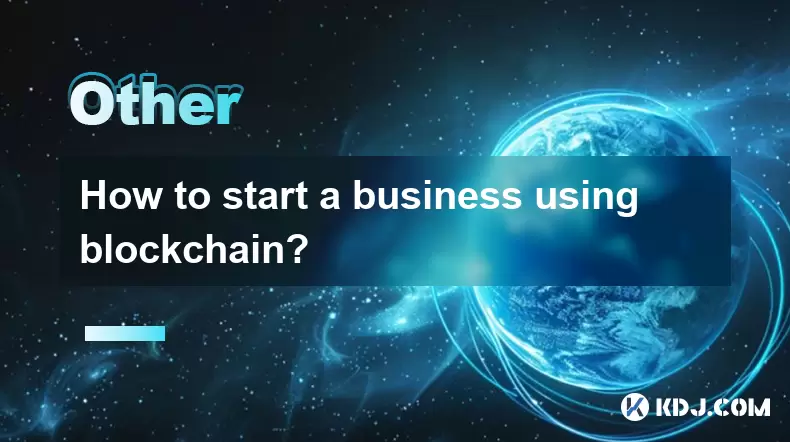-
 Bitcoin
Bitcoin $114800
-3.31% -
 Ethereum
Ethereum $3641
-5.84% -
 XRP
XRP $2.948
-6.36% -
 Tether USDt
Tether USDt $0.9998
-0.03% -
 BNB
BNB $772.4
-3.97% -
 Solana
Solana $169.1
-6.68% -
 USDC
USDC $0.9999
-0.01% -
 Dogecoin
Dogecoin $0.2056
-8.09% -
 TRON
TRON $0.3247
-0.18% -
 Cardano
Cardano $0.7239
-7.43% -
 Hyperliquid
Hyperliquid $39.71
-8.60% -
 Stellar
Stellar $0.3912
-7.84% -
 Sui
Sui $3.510
-10.17% -
 Chainlink
Chainlink $16.59
-8.03% -
 Bitcoin Cash
Bitcoin Cash $560.5
-3.65% -
 Hedera
Hedera $0.2464
-10.08% -
 Avalanche
Avalanche $22.03
-7.87% -
 Ethena USDe
Ethena USDe $1.001
-0.02% -
 UNUS SED LEO
UNUS SED LEO $8.947
0.21% -
 Toncoin
Toncoin $3.389
-2.58% -
 Litecoin
Litecoin $104.9
-5.23% -
 Shiba Inu
Shiba Inu $0.00001220
-6.67% -
 Polkadot
Polkadot $3.652
-6.10% -
 Uniswap
Uniswap $9.213
-9.05% -
 Monero
Monero $307.2
-2.93% -
 Dai
Dai $0.9998
-0.02% -
 Bitget Token
Bitget Token $4.367
-2.89% -
 Cronos
Cronos $0.1374
-6.80% -
 Pepe
Pepe $0.00001056
-8.65% -
 Aave
Aave $257.3
-7.31%
What is cross-chain bridge/side chain/Layer2? Detailed explanation of blockchain expansion plan
Cross-chain bridges, side chains, and Layer 2 solutions enhance blockchain scalability and interoperability, crucial for DeFi, NFTs, and gaming applications.
Jun 02, 2025 at 06:56 pm

Cross-chain bridges, side chains, and Layer 2 solutions represent crucial components of blockchain expansion plans, each serving unique purposes in enhancing the scalability, interoperability, and efficiency of blockchain networks. This article delves into the intricacies of these technologies, providing a detailed explanation of how they contribute to the broader ecosystem of blockchain technology.
Understanding Cross-Chain Bridges
Cross-chain bridges are essential tools that enable the transfer of assets and data between different blockchain networks. They act as intermediaries, facilitating interoperability and allowing users to leverage the strengths of multiple blockchains. For instance, a user might want to transfer tokens from Ethereum to Binance Smart Chain to take advantage of lower transaction fees or faster processing times.
The operation of a cross-chain bridge typically involves several steps:
- Locking Assets: The user locks their assets on the source blockchain.
- Minting Wrapped Tokens: Equivalent tokens are minted on the destination blockchain, often referred to as wrapped tokens.
- Transferring Back: When the user wishes to return the assets to the original blockchain, the wrapped tokens are burned, and the original assets are unlocked.
Cross-chain bridges enhance the flexibility of blockchain ecosystems, allowing for seamless integration and utilization of various networks. They are particularly valuable in decentralized finance (DeFi) applications, where users can access different liquidity pools and yield farming opportunities across multiple chains.
Exploring Side Chains
Side chains are separate blockchains that are linked to a main blockchain, often referred to as the parent chain. They are designed to offload some of the main chain's workload, thereby improving its scalability and performance. Side chains operate independently but maintain a two-way peg with the main chain, allowing assets to be moved back and forth.
The implementation of a side chain involves:
- Creating the Side Chain: Developers set up a new blockchain with its own consensus mechanism and rules.
- Establishing a Two-Way Peg: A mechanism is established to lock assets on the main chain and release equivalent assets on the side chain, and vice versa.
- Operating Independently: The side chain processes transactions and executes smart contracts independently of the main chain.
Side chains are particularly useful for scaling applications that require high throughput, such as gaming platforms or social networks. By offloading these applications to a side chain, the main chain can focus on more critical tasks, such as maintaining network security and consensus.
Delving into Layer 2 Solutions
Layer 2 solutions are protocols built on top of existing blockchains to improve their scalability and transaction speed. They process transactions off the main chain (Layer 1) and then settle the final state back on the main chain. This approach significantly reduces the load on the main chain, allowing for faster and cheaper transactions.
There are several types of Layer 2 solutions, including:
- State Channels: These allow participants to conduct numerous transactions off-chain and only settle the final state on the main chain. They are particularly useful for microtransactions and frequent interactions.
- Plasma Chains: These are child blockchains that are anchored to the main chain, allowing for the processing of transactions in a more scalable manner.
- Rollups: These aggregate multiple transactions into a single transaction, reducing the data that needs to be processed on the main chain. There are two types: Optimistic Rollups and Zero-Knowledge Rollups.
Layer 2 solutions are widely adopted in the Ethereum ecosystem, where they help address issues of high gas fees and slow transaction times. They enable developers to build more efficient and cost-effective decentralized applications (dApps).
Interoperability and Integration
The integration of cross-chain bridges, side chains, and Layer 2 solutions plays a pivotal role in achieving interoperability across different blockchain networks. Interoperability allows different blockchains to communicate and share data, creating a more cohesive and efficient ecosystem.
For example, a DeFi application might use a cross-chain bridge to access liquidity from multiple chains, a side chain to process high-frequency transactions, and a Layer 2 solution to reduce costs. This combination of technologies enables the application to offer a seamless user experience while maintaining high performance and security.
Challenges and Considerations
While cross-chain bridges, side chains, and Layer 2 solutions offer significant benefits, they also come with challenges and considerations. Security is a primary concern, as each of these technologies introduces new points of vulnerability. For instance, cross-chain bridges can be targeted by hackers seeking to exploit the locking and minting mechanisms.
Additionally, complexity can be a barrier to adoption. Users and developers must understand the intricacies of each technology to use them effectively. This requires ongoing education and support from the blockchain community.
Regulatory compliance is another factor to consider. As blockchain technology evolves, regulatory frameworks may impact the implementation and operation of these expansion solutions. Developers must stay informed about relevant regulations and ensure their solutions comply with legal requirements.
Practical Applications
The practical applications of cross-chain bridges, side chains, and Layer 2 solutions are vast and varied. In the realm of DeFi, these technologies enable the creation of more sophisticated financial products and services. For example, a cross-chain bridge might be used to facilitate the movement of stablecoins between different DeFi platforms, enhancing liquidity and user options.
In the context of non-fungible tokens (NFTs), side chains can be used to create more efficient marketplaces, where transactions are processed quickly and at a lower cost. Layer 2 solutions can further enhance the user experience by reducing the fees associated with minting and trading NFTs.
Gaming is another area where these technologies are making an impact. By leveraging side chains and Layer 2 solutions, game developers can create more immersive and interactive experiences, with faster transaction processing and lower costs for in-game purchases and asset transfers.
Frequently Asked Questions
Q: How do cross-chain bridges ensure the security of transferred assets?
A: Cross-chain bridges employ various security measures, such as multi-signature wallets and smart contract audits, to protect assets during transfer. Additionally, many bridges use decentralized networks of validators to ensure that the locking and minting processes are executed securely and transparently.
Q: Can side chains operate independently of the main chain?
A: Yes, side chains operate independently in terms of transaction processing and smart contract execution. However, they maintain a connection to the main chain through a two-way peg, which allows assets to be moved between the two chains.
Q: What are the main differences between Optimistic Rollups and Zero-Knowledge Rollups?
A: Optimistic Rollups assume transactions are valid by default and use a challenge period to dispute invalid transactions. Zero-Knowledge Rollups, on the other hand, use cryptographic proofs to verify transactions instantly, providing a higher level of security and faster finality.
Q: How can developers choose the right Layer 2 solution for their project?
A: Developers should consider factors such as transaction speed, cost, security, and the specific requirements of their application. For example, state channels are ideal for applications with frequent interactions, while rollups might be better suited for applications requiring high throughput and low fees.
Disclaimer:info@kdj.com
The information provided is not trading advice. kdj.com does not assume any responsibility for any investments made based on the information provided in this article. Cryptocurrencies are highly volatile and it is highly recommended that you invest with caution after thorough research!
If you believe that the content used on this website infringes your copyright, please contact us immediately (info@kdj.com) and we will delete it promptly.
- Bitcoin, Ethereum, and Investor Behavior: A New York Minute on Crypto Trends
- 2025-08-01 15:10:12
- Tether's Q2 Triumph: USDT Supply Soars Amidst Profit Surge!
- 2025-08-01 15:10:12
- Ethereum ETF Holdings: A Corporate Treasury Revolution?
- 2025-08-01 15:30:12
- Ethereum's Wild Ride: Funding Rates, Price Drops, and Retail to the Rescue!
- 2025-08-01 15:30:12
- Ethereum Under Pressure: Crypto Market Drop Explained
- 2025-08-01 15:35:11
- Ethereum ETF Mania: Inflows Surge, Market Rises, What's Next?
- 2025-08-01 15:35:11
Related knowledge

How to start a business using blockchain?
Jul 28,2025 at 12:36am
Understanding the Basics of Blockchain TechnologyBefore diving into the process of starting a business using blockchain, it's crucial to understand wh...

What is a token on the blockchain?
Jul 21,2025 at 07:00am
Understanding the Concept of a TokenIn the realm of blockchain technology, a token is a digital representation of an asset or utility that exists on a...

Can blockchain be used for identity verification?
Jul 18,2025 at 02:14pm
Understanding Identity Verification in the Digital AgeIn the modern digital landscape, identity verification has become a critical component for ensur...

What is a consensus mechanism in blockchain?
Jul 21,2025 at 03:01am
Understanding the Basics of Consensus MechanismsA consensus mechanism is a critical component of any blockchain network. It refers to the process by w...

How to explain blockchain to someone with no tech background?
Jul 18,2025 at 11:08pm
Understanding the Basics of BlockchainTo explain blockchain to someone with no tech background, it's essential to start with simple analogies and avoi...

Who invented blockchain technology?
Jul 23,2025 at 01:28am
Origins of Blockchain TechnologyBlockchain technology did not emerge from a single inventor or institution. Instead, it evolved through a series of ac...

How to start a business using blockchain?
Jul 28,2025 at 12:36am
Understanding the Basics of Blockchain TechnologyBefore diving into the process of starting a business using blockchain, it's crucial to understand wh...

What is a token on the blockchain?
Jul 21,2025 at 07:00am
Understanding the Concept of a TokenIn the realm of blockchain technology, a token is a digital representation of an asset or utility that exists on a...

Can blockchain be used for identity verification?
Jul 18,2025 at 02:14pm
Understanding Identity Verification in the Digital AgeIn the modern digital landscape, identity verification has become a critical component for ensur...

What is a consensus mechanism in blockchain?
Jul 21,2025 at 03:01am
Understanding the Basics of Consensus MechanismsA consensus mechanism is a critical component of any blockchain network. It refers to the process by w...

How to explain blockchain to someone with no tech background?
Jul 18,2025 at 11:08pm
Understanding the Basics of BlockchainTo explain blockchain to someone with no tech background, it's essential to start with simple analogies and avoi...

Who invented blockchain technology?
Jul 23,2025 at 01:28am
Origins of Blockchain TechnologyBlockchain technology did not emerge from a single inventor or institution. Instead, it evolved through a series of ac...
See all articles

























































































